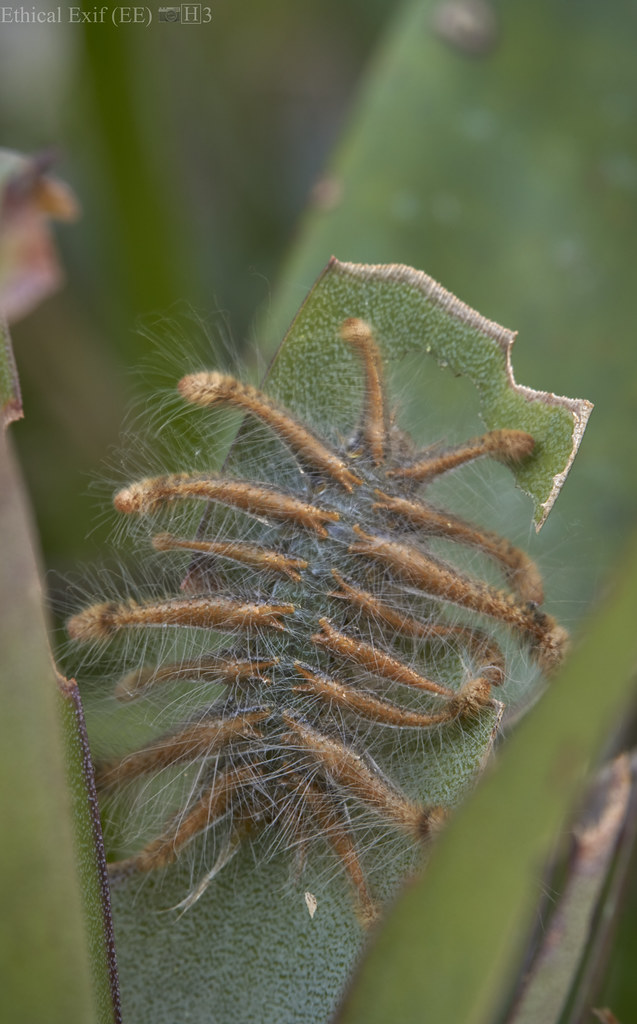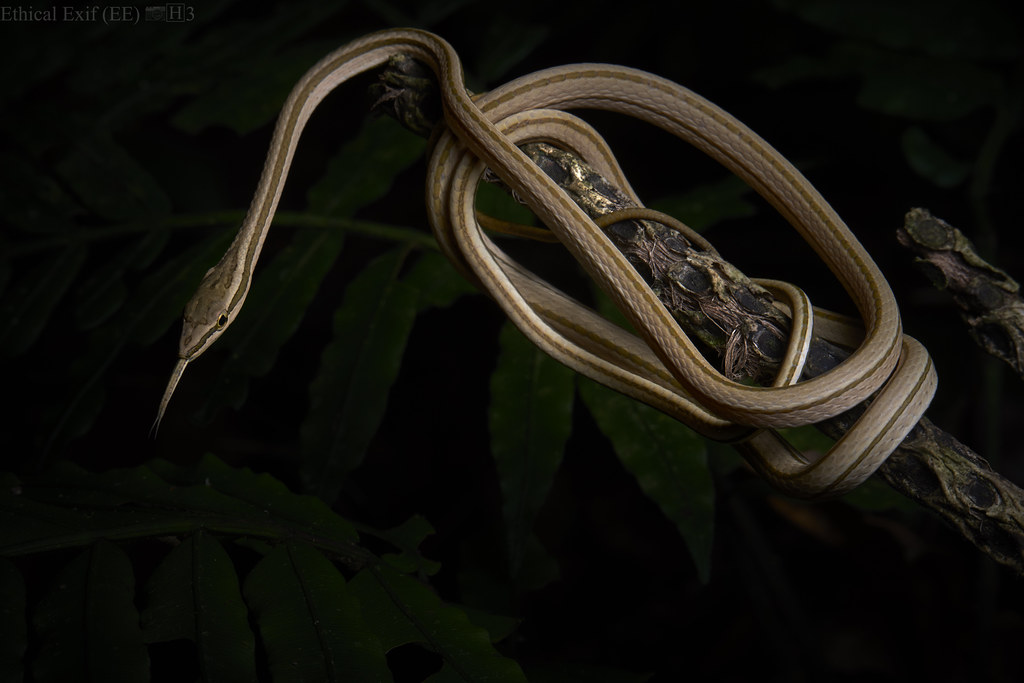
A slug moth caterpillar (Limacodidae) might not show the same grace as the preceding butterfly, but its painful urticating hairs and cryptic form are no less impressive in their own right:

A hooded-mantis (Choeradodis sp.) grooming its raptorial forelegs, keeping them primed and ready for passing prey:

Flowering plant:

A dead-leaf mimicking katydid (Typophyllum sp.) moved from a nearby green leaf on which it was feeding to the forest floor so as to better illustrate its camouflage (then promptly returned):

A cryptic katydid nymph plasters itself against a palm leaf, its serrated leg margins disrupting its shape to help it blend in:

A moulting conocephaline katydid finds itself in a vulnerable state as its chitinous exoskeleton hardens. In such a state, it can be overwhelmed by much smaller and unassuming assailants. However, once the components of the exoskeleton have oxidized and hardened, it is a predator of small prey, aggressive and resilient:

Blunt-headed treesnakes (Imantodes cenchoa) are relatively common along forest streams at night. Their large bulbous eyes searching out prey like snails:

A striped sharp-nose snake (Philodryas argentea) a diurnal snake is typically found in the forest mid-story where it hunts mostly frogs and lizards:

An aquamarine lichen:

A Juvenile tarantula emerges from its burrow from which it never strays far. Its game is patience, as it waits for its prey to come to it:

A spiny orbweaver (Micrathena sp.) with impressive horns:

Thanks for looking and commenting,
Paul
